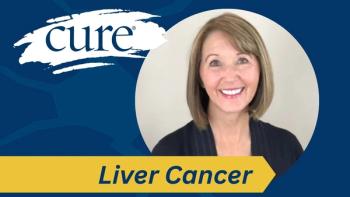
Pairing Radiation Oncology and Palliative Care Leads to Better Outcomes
A novel service model allowed for shorter durations of treatment with radiation, fewer unfinished treatments with radiation, shorter hospital stays and increased use of palliative care.
An intervention combining palliative care with radiation oncology led to better results among patients with painful bone metastases, according to preliminary findings from a new study. These results will be presented at the 2015 Palliative Care in Oncology Symposium from October 9-10.
The novel service model allowed for shorter durations of treatment with radiation, fewer unfinished treatments with radiation, shorter hospital stays and increased use of palliative care.
“Our study validates the importance of cohesive collaboration in cancer care. As a palliative radiation oncologist, tackling pain is only a small part of what I do,” Kavita Dharmarajan, MD, MSc, the study’s senior author, said in a statement. “My role extends to engage patients and families in conversations that help distill their priorities and set realistic expectations of treatment.”
“Partnering with palliative care helps us incorporate goals and preferences into our care plans.”
The standard treatment for bone metastases is 10 radiation treatments, says Dharmarajan, an assistant professor of radiation oncology and palliative medicine at Mount Sinai Medical Center. Occasionally, Dharmarajan noted, patients do not survive long enough following radiation to experience its benefits. Shorter treatment is as effective but is currently underutilized.
The novel service model called for increased use of single-fraction radiation treatment (given in a single session) and fraction radiation treatments given over the course of one week or less. In the study, patients receiving five or fewer radiation treatments increased from 26 to 61 percent.
In total, 336 patients with stage 4 cancer receiving radiation treatment for bone metastases were evaluated. From December 2010 to September 2013, 175 patients received standard care and from October 2013 to September 2015, 161 patients received care under the new model.
Use of shorter radiation treatments under the new model was associated with an increase in the proportion of patients receiving palliative care within a month (49 versus 34 percent). The new model also led to a decrease in patients’ median length of stay (18 versus 12 days) and a reduction in the proportion of unfinished radiation treatments (15 versus 8 percent).
“This is important work and it demonstrates first-hand the practical impact incorporating palliative care can have to standard treatment,” said Don S. Dizon, MD, clinical co-director, Gynecologic Oncology, Massachusetts General Hospital, and ASCO expert, during the presscast.
Crucially, changes in care under the new model did not affect the ability to relieve pain — 80 percent of patients achieved pain relief under the new model compared with 74 percent under the old model, though the difference was not statistically significant.
“It’s possible not only to tailor our treatment for patients with bone metastases, leading to better utilization of resources and higher completions of therapy, but we can do so without negatively impacting the goals of treatment in the first place,” Dizon said.
During the presscast, Dharmarajan told the story of “Mrs. Jones,” a 48-year-old patient with advanced breast cancer who was admitted with severe back pain from metastases to her spine. As the mother of two teenage boys, her goals were to spend as much time with them as possible and live as long as possible.
Had she received care by the palliative/radiation intervention, Dharmarajan says, Jones would have been most likely referred to palliative care services, her pain would have most likely been controlled and she would have been able to spend six more days at home with her sons.
“When we work together, patients receive a higher quality of care that focuses on the whole person, not just a tumor,” Dharmarajan said.
Chang S, Smith CB, Morrison S, et al. A palliative radiation oncology consult service’s impact on care of advanced cancer patients with symptomatic bone metastases. J Clin Oncol. 2015;33(suppl; abstr 110).




